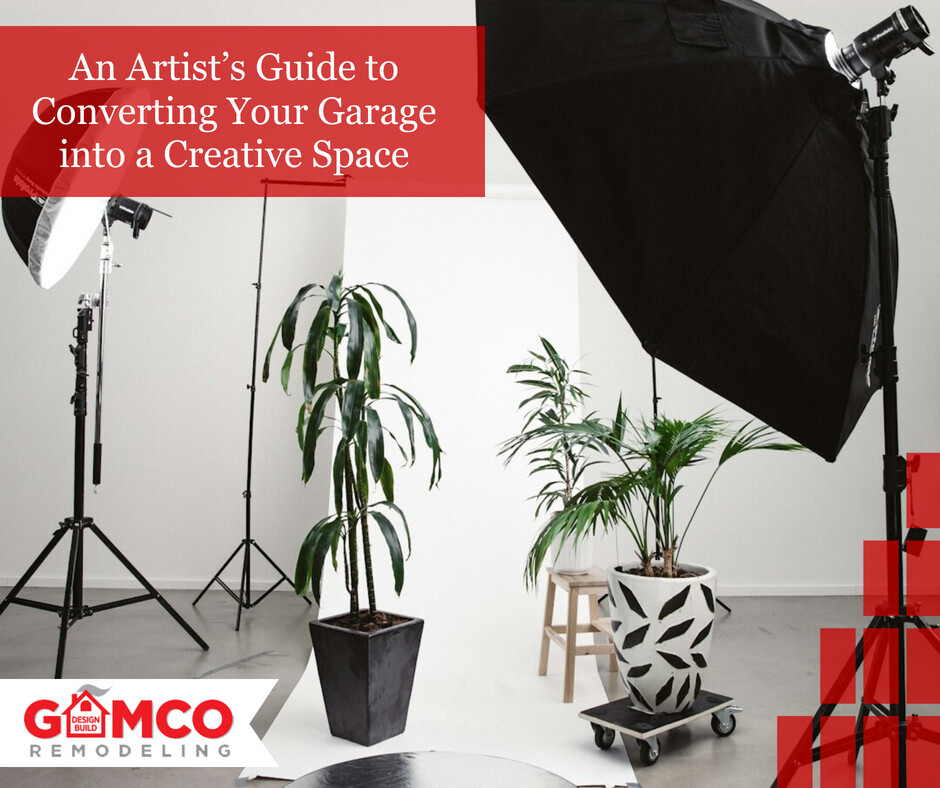
If you’re an artist looking for a dedicated space to work on your craft, your garage might be the perfect blank canvas for a creative studio. Garages offer ample space and privacy and can be transformed into a functional and inspiring workspace for painters, sculptors, musicians, writers, and creators of all kinds. Here’s a guide to help you convert your garage into a creative space that fuels your passion.
1. Plan Your Creative Layout
First, consider how you plan to use the space. Think about the types of projects you work on and how much room they require. Will you need a large table for painting? Or maybe floor space for larger projects? Try to envision your workflow. Divide the garage into functional zones for activities like sketching, painting, storage, and relaxation. This will help you decide what furniture and storage solutions you’ll need to bring in.
2. Manage Temperature and Ventilation
Since garages aren’t usually built for comfort, you’ll want to make them suitable for year-round use. Insulate the walls and garage door to regulate temperature, as extreme heat or cold can affect not only your comfort but also the quality of your supplies and work. Install a portable heater or air conditioning unit as needed, and if your art involves fumes from paint, clay, or other materials, make sure to install proper ventilation with an exhaust fan or windows.
3. Let in Natural Light (and Add Some!)
Good lighting is essential in any creative space. While garages tend to have little natural light, adding a few windows can make a huge difference. If adding windows isn’t feasible, consider installing a glass or frosted garage door for more daylight. Supplement with LED daylight bulbs, task lighting, and dimmable lamps so you can adjust brightness for specific tasks and nighttime work.
4. Choose Durable Flooring
The garage floor needs to withstand spills, dropped tools, and heavy furniture, so look for flooring that can handle it all. Consider using durable materials like epoxy or vinyl tiles that are easy to clean and resilient to wear and tear. For extra comfort and warmth, add rugs or foam mats in work areas to make standing easier, especially during long hours in the studio.
5. Invest in Storage Solutions
From paint tubes and brushes to canvases and sketchpads, an artist’s tools can take up a lot of space. Maximize your garage storage with shelving, drawers, and pegboards. Consider using stackable storage bins and modular organizers that you can easily adjust as your needs grow. Pegboards are especially handy for keeping supplies within reach, and they add an industrial touch that complements many studio aesthetics.
6. Soundproof Your Space
If you’re a musician, podcaster, or any artist working with sound, soundproofing will be a top priority. Install acoustic foam panels or hang thick curtains along the walls to minimize echoes and prevent sound from escaping. Adding rugs, textiles, or acoustic flooring can further improve sound quality and reduce noise for a quieter workspace.
7. Personalize with Inspirational Decor
Bring your personality into the space with decor that fuels your creativity. Hang art that inspires you, use chalkboard paint on one wall to jot down ideas, or add indoor plants for a refreshing touch. These elements not only make the space feel like your own but can also spark inspiration for your next masterpiece.
8. Optimize for Utility and Comfort
While creating, comfort is key. Invest in ergonomic furniture like a supportive chair and an adjustable desk that suits your working style. Consider adding a couch or comfy chair in a corner where you can step back and evaluate your work or take a break. And if you’ll be in the garage for long hours, think about adding a mini fridge and coffee station!
9. Consider Security
Since the garage may house your valuable art supplies and finished pieces, consider upgrading the security. Install deadbolts, an alarm system, or even a security camera to keep your creative investments safe. You can also hang curtains or blinds over any windows to keep your art hidden from view.
10. Set Up an Inspiring Workspace
Finally, create an atmosphere that fosters inspiration. Many artists enjoy playing background music, so a good sound system could be a nice addition. Essential oil diffusers or incense can enhance the ambiance with scents that encourage relaxation and creativity. Think about what truly inspires you and incorporate those elements into your space.
Final Thoughts
Converting your garage into an art studio allows you to create freely without worrying about the mess, noise, or space restrictions often found in other areas of the house. It’s a space designed entirely for you and your artistic journey. With a few practical adjustments and personal touches, your garage can become the ultimate creative sanctuary where inspiration is always close at hand.
